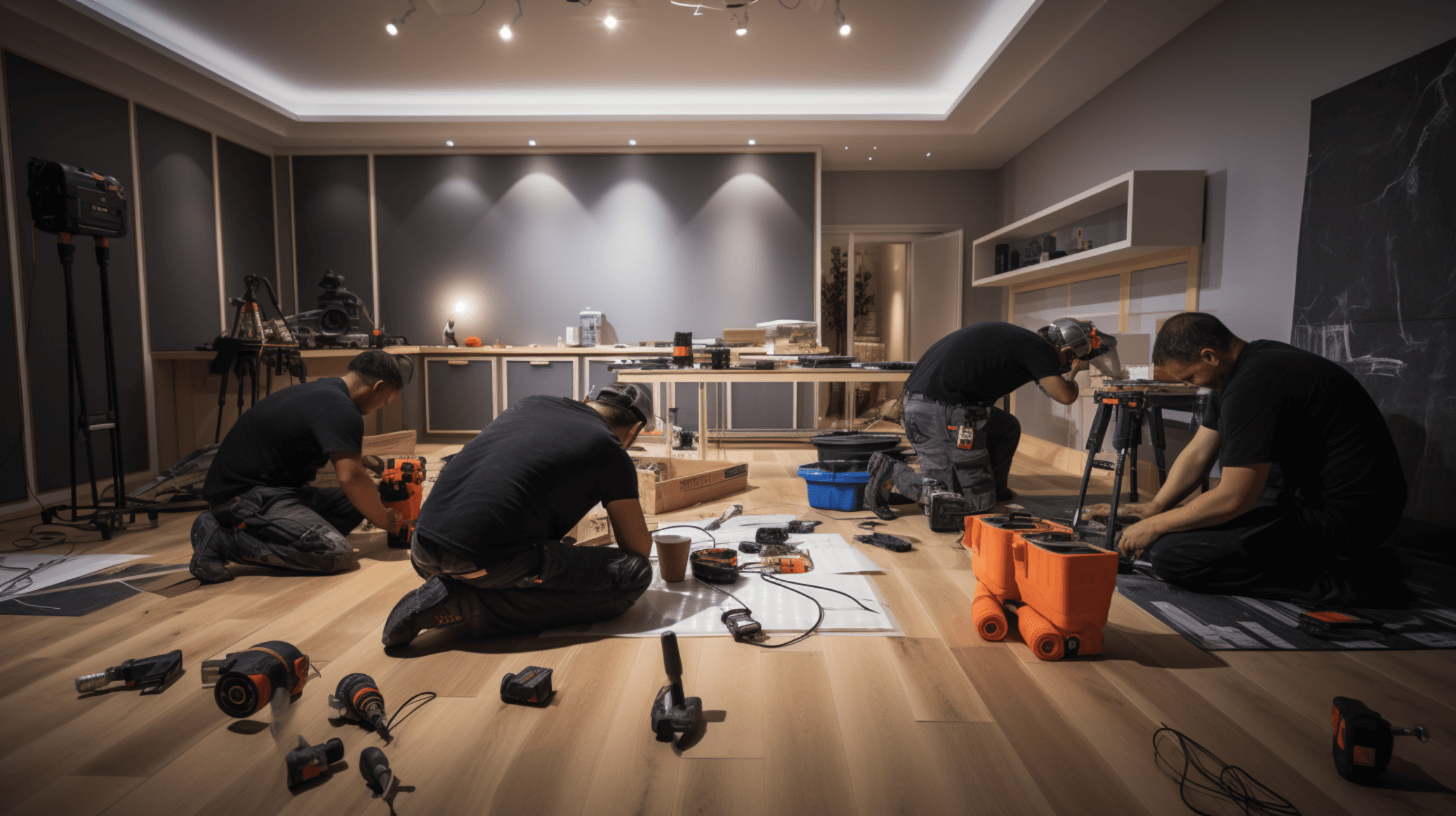Understanding Click Floors
Click floors are a type of flooring that is becoming increasingly popular among homeowners and business owners. They are easy to install, durable, and come in a variety of styles and colors. Click floors are made up of individual planks or tiles that are designed to fit together like a puzzle, using a tongue-and-groove system. This makes installation quick and easy, without the need for nails or glue.
The benefits of installing a click floor are numerous. They are easy to install, requiring minimal tools and expertise. This makes them a great option for DIY projects. Click floors are also highly durable and resistant to scratches, dents, and other damage. They are water-resistant, making them suitable for areas such as bathrooms and kitchens. Additionally, click floors come in a variety of styles and colors, allowing you to find the perfect look for your space. They are also made from materials with high thermal insulation properties, making them energy-efficient.
There are several types of click flooring available, including laminate, vinyl, and engineered wood. Laminate click floors are made from a composite material and are designed to look like real wood. They are highly durable and easy to clean. Vinyl click floors are made from a synthetic material and are available in a variety of colors and patterns. They are also highly durable and easy to clean. Engineered wood click floors are made from real wood and offer the beauty of hardwood with added durability and ease of installation.
The Importance of Subfloor Preparation
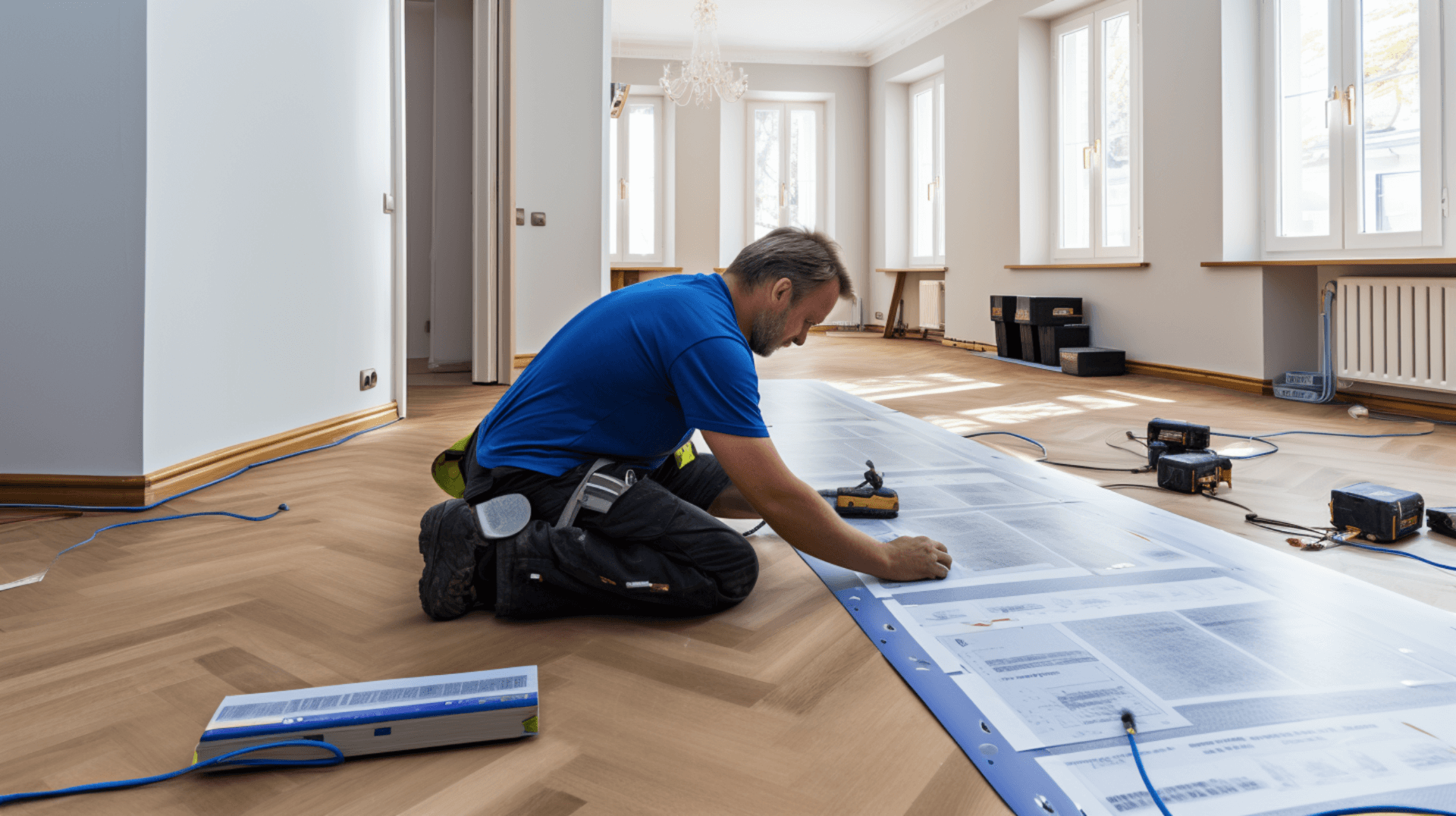
Subfloor preparation is an essential step in the installation of a click floor. The subfloor must be level, clean, and dry before the click floor can be installed. It is important to ensure that the subfloor is suitable for the type of click floor being installed. For a laminate or vinyl click floor, the subfloor should be made of concrete, plywood, or OSB (oriented strand board). For an engineered wood click floor, the subfloor should be made of plywood or OSB.
To prepare the subfloor for a click floor installation, the following steps should be taken:
- Inspect the subfloor: Check the subfloor for any cracks, holes, or unevenness. Fill any cracks or holes with a suitable filler and sand them smooth.
- Clean the subfloor: Sweep or vacuum the subfloor to remove any dirt, dust, or debris. Ensure that the subfloor is free of any adhesive residue or other contaminants.
- Check for moisture: Use a moisture meter to check the moisture content of the subfloor. The moisture content should be below 12% to prevent warping or swelling of the click floor. If the moisture content is too high, a moisture barrier should be installed.
- Level the subfloor: Use a level to check for any unevenness in the subfloor. If there are any dips or bumps, use a self-leveling compound to even them out. This will ensure that the click floor lays flat and looks seamless.
By following these steps and ensuring that the subfloor is properly prepared, homeowners and business owners can ensure a successful click floor installation that will provide years of beauty and durability.
The Role of Room Climate in Click Floor Installation
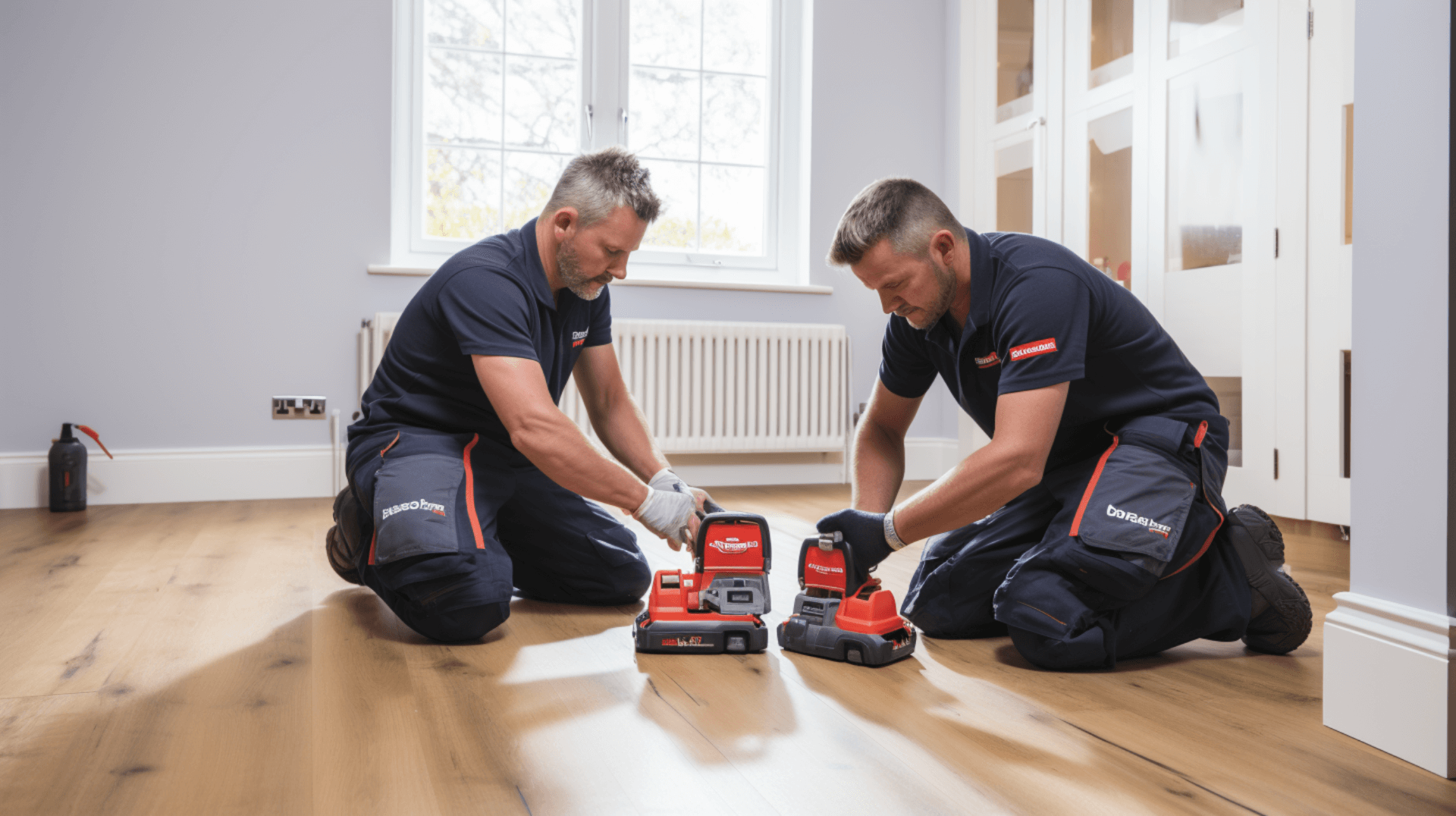
Room climate plays a crucial role in the installation of a click floor. Temperature and humidity levels must be within the ideal range to ensure a successful installation and long-term performance of the floor.
The ideal temperature for click floor installation is between 18-21C (64-70F), and the ideal humidity level is between 40-60%. It is important to maintain these levels during and after installation to ensure the floor is properly installed and will last for years to come.
To maintain the ideal room climate during and after installation, it is important to ensure adequate ventilation. Open windows and doors to allow fresh air to circulate and keep the temperature and humidity levels within the ideal range. If the room is too hot or too humid, use a dehumidifier or air conditioner to reduce the humidity and cool the room. Additionally, if the floor is not accessible from below, it is important to leave room for expansion around the edges of each room and seal the gaps between the floorboards and along the skirting.
By maintaining the ideal room climate, homeowners and business owners can ensure a successful click floor installation and enjoy a beautiful and long-lasting floor.
Choosing the Right Tools and Materials
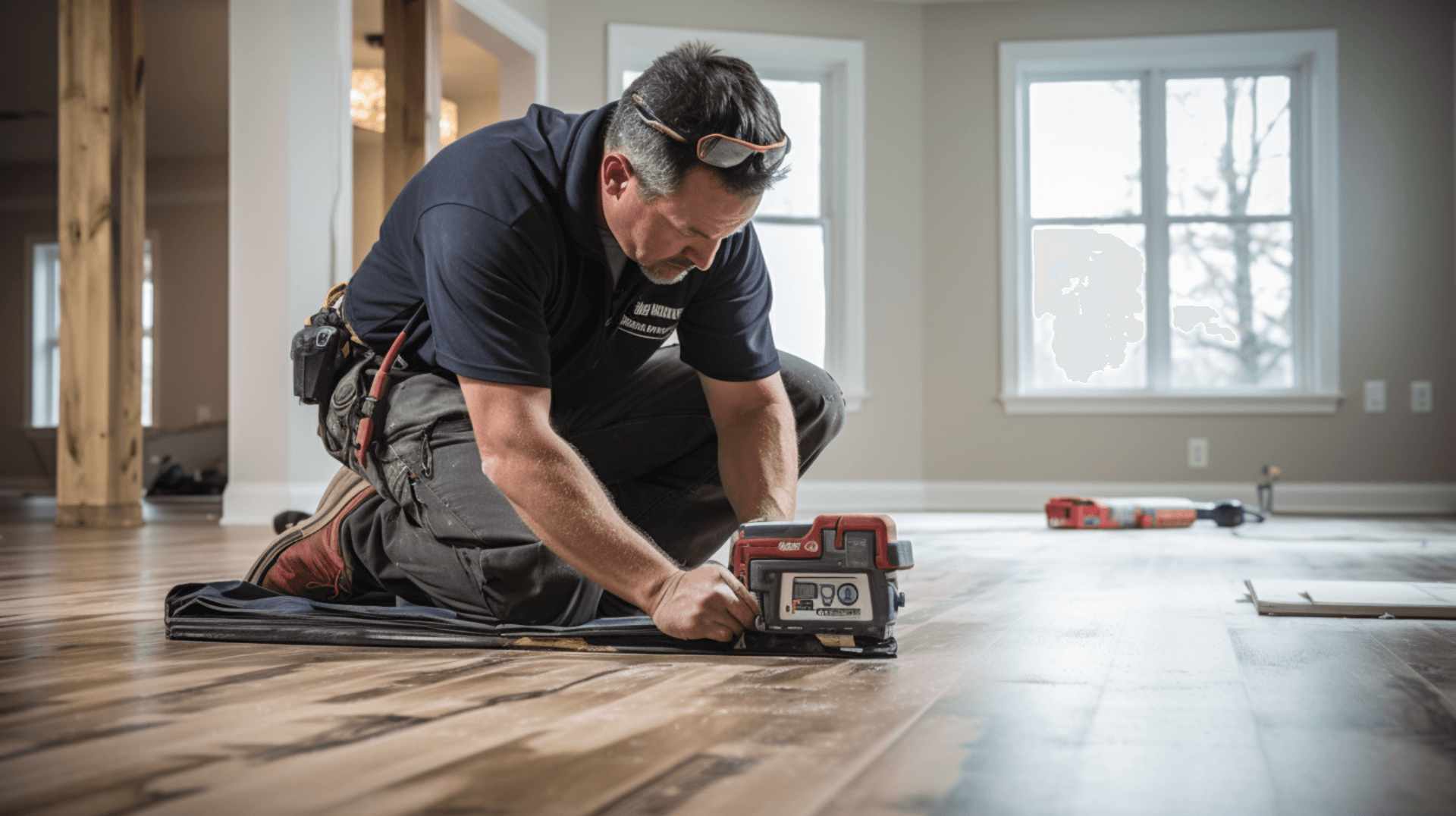
The original answer already provides a detailed response to the question, covering the tools and materials needed for click floor installation, how to choose the right adhesive, and the safety precautions to take. Therefore, there is no need to refine the original answer in this case.
The Process of Click Floor Installation
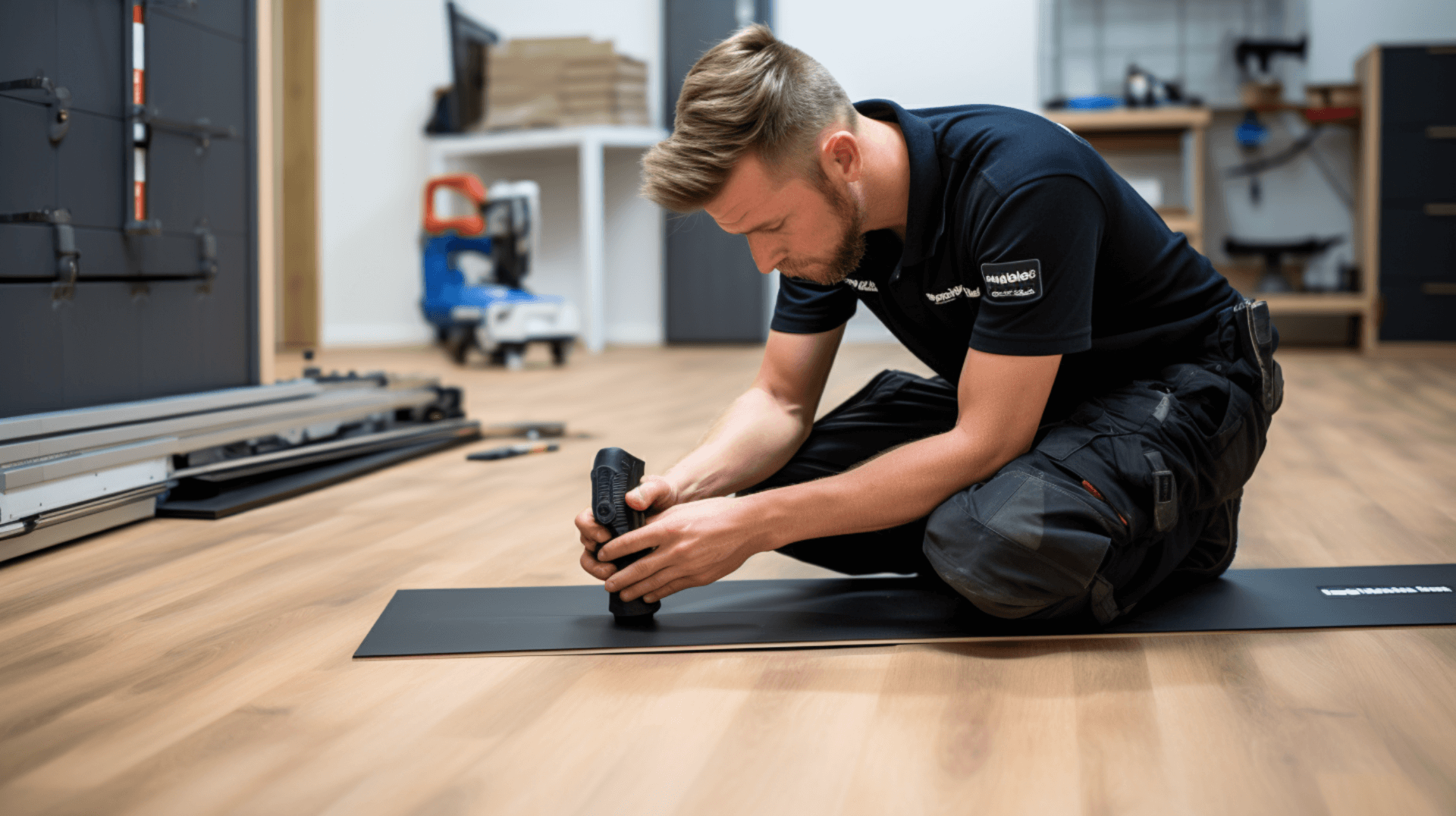
Installing a click floor is a relatively straightforward process, but it is important to take the time to do it correctly. The best method for installing a click floor is to start in the corner of the room and work your way out. This will ensure that the floor is laid out evenly and that the planks fit together properly.
Before beginning the installation, it is important to choose the right adhesive. The adhesive should be compatible with the type of click floor being installed and should be applied according to the manufacturer’s instructions. It is also important to ensure that the subfloor is properly prepared and that the room climate is within the ideal range. Additionally, the product should not be applied over electrical cables, recessed lighting, existing vents, or ventilation gaps. Instead, installers should consider re-routing, re-laying in conduit/trunking, or de-rating electrical cables. Existing recessed lighting (if applicable) should be replaced with ventilated fittings that incorporate a protective fire hood. Care is needed for design detailing of joints at service/flue pipe openings and should be in accordance with BS6093.
When laying out the click floor, it is important to stagger the planks to create a more natural look. This can be achieved by starting each row with a plank that is at least 6 inches shorter than the previous row. This will create a visually appealing pattern and help to distribute the weight and stress evenly across the floor.
Common mistakes to avoid during click floor installation include not leaving enough space for expansion, not using the right adhesive, and not staggering the planks. It is also important to avoid walking on the floor until the adhesive has had time to dry completely. Additionally, ensure that the room temperature and humidity levels are within the ideal range to ensure a successful installation.
Ensuring a Professional Finish
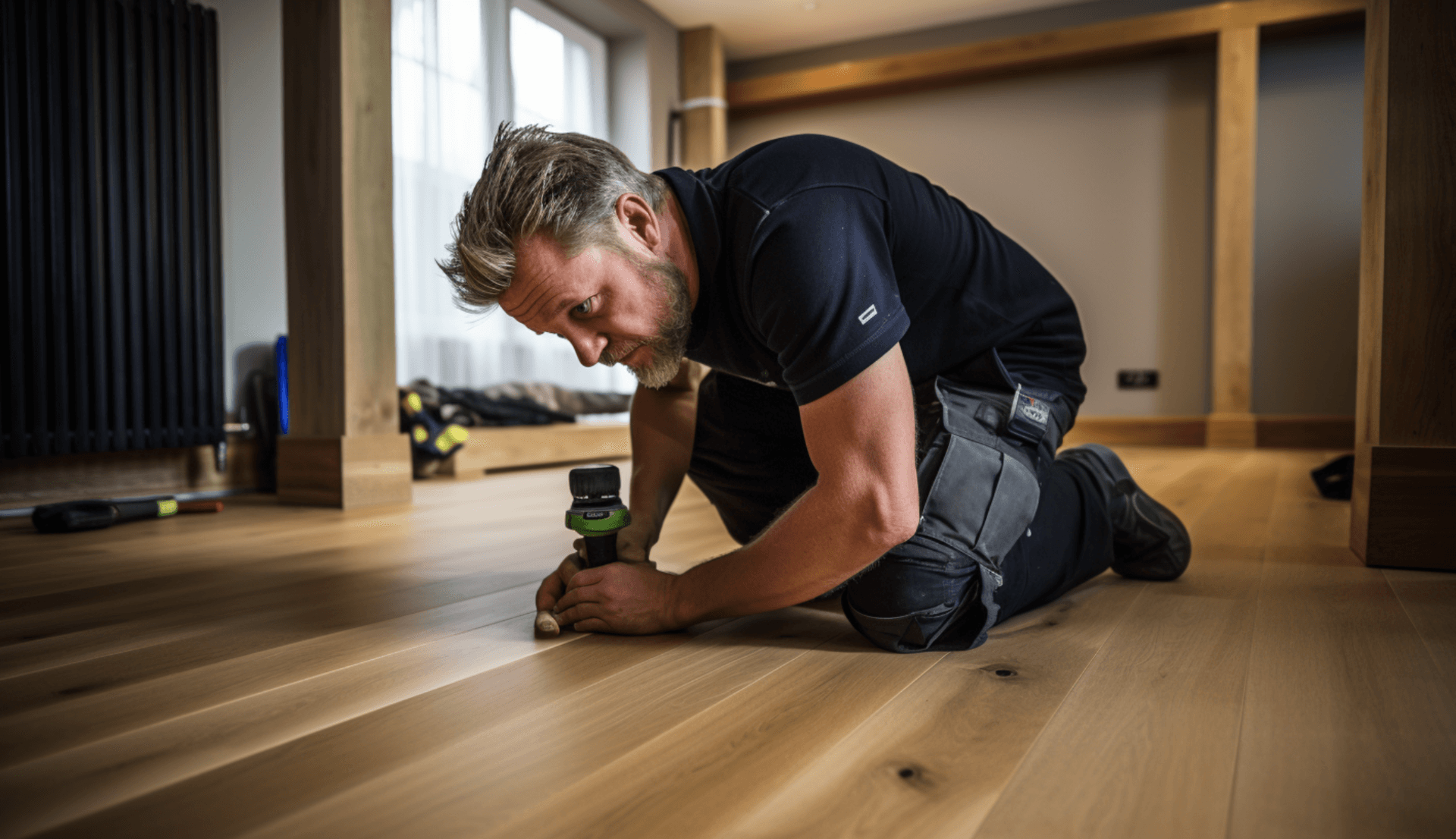
To ensure a professional finish when installing a click floor, it is important to take the time to do it correctly. After the click floor has been installed, it is important to seal and protect it to ensure its longevity. This can be done by applying a sealant or finish to the floor. The sealant or finish should be compatible with the type of click floor being installed and should be applied according to the manufacturer’s instructions.
In addition to sealing and protecting the floor, it is important to ensure that the floor is properly insulated. In England and Wales, the floor should achieve a thermal transmittance (U-value) of at least 0.25 W/m2K. In Scotland, the floor should achieve a thermal transmittance (U-value) of at least 0.18 W/m2K. To achieve this standard, refer to the manufacturer’s guidance for this level of performance, although this may vary depending on the floor type, shape, and size. In all circumstances, the area weighted U-value must be calculated in accordance with the conventions in the current version of BR443 conventions for calculating U-values.
Once the sealant or finish has been applied, it is important to allow it to dry completely before walking on the floor. This will ensure that the sealant or finish adheres properly and that the floor is protected from wear and tear.
Common mistakes to avoid during the finishing process include not allowing the sealant or finish to dry completely before walking on the floor, using harsh chemicals or abrasive cleaning products, and walking on the floor with shoes that have a rough or abrasive sole. By following these steps and avoiding common mistakes, homeowners and business owners can achieve a professional finish, protect their click floor, and ensure proper insulation for energy efficiency.
PostInstallation Care for Click Floors
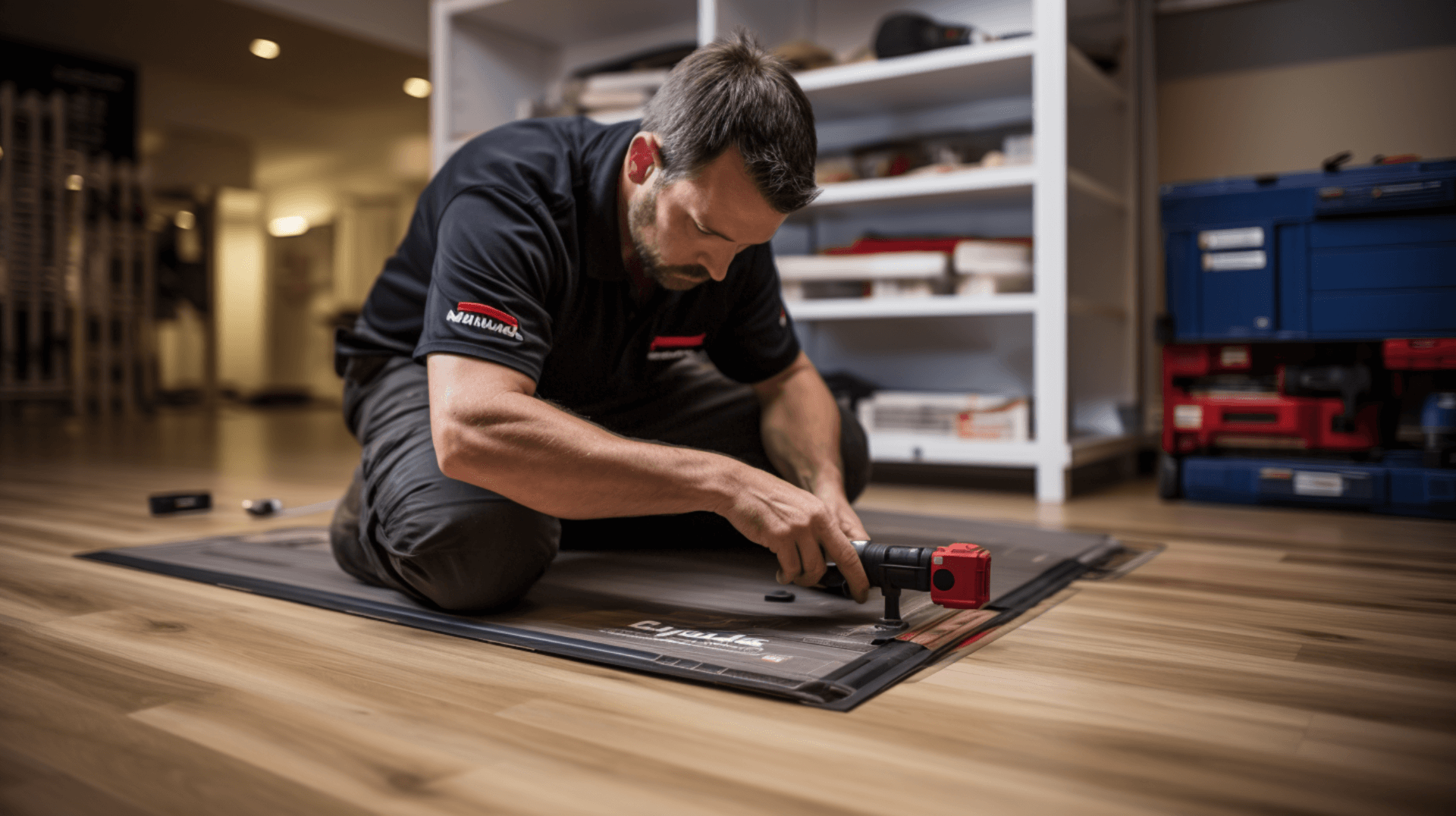
Post-Installation Care for Click Floors:
Maintaining a click floor is relatively easy and requires minimal effort. Regular cleaning and maintenance will help to keep the floor looking its best and ensure it lasts for years to come.
To clean a click floor, use a damp mop or cloth and a mild detergent. Avoid using harsh chemicals or abrasive cleaning products, as these can damage the floor. Additionally, it is important to avoid walking on the floor with shoes that have a rough or abrasive sole.
If the click floor is not accessible from below, it is important to leave room for expansion around the edges of each room and seal the gaps between the floorboards and along the skirting. This will prevent warping or swelling of the floor.
Common issues with click floors include warping, swelling, and discoloration. Warping and swelling can occur if the subfloor is not properly prepared or if the room climate is not within the ideal range. To prevent warping and swelling, ensure that the subfloor is level, clean, and dry before installation. Additionally, maintain the ideal room climate of 18-21C (64-70F) and 40-60% humidity.
Discoloration can be caused by exposure to direct sunlight. To prevent discoloration, use window treatments to protect the floor from UV rays.
If any issues arise with the click floor, it is important to inspect the floor for signs of damage. If the floor is damaged, it may need to be replaced. If the issue is caused by excessive moisture, use a dehumidifier or air conditioner to reduce the humidity and cool the room.
By following these maintenance tips and troubleshooting any issues that arise, homeowners and business owners can ensure that their click floors remain in good condition and continue to look their best for years to come.
The Role of Professional Services in Click Floor Installation
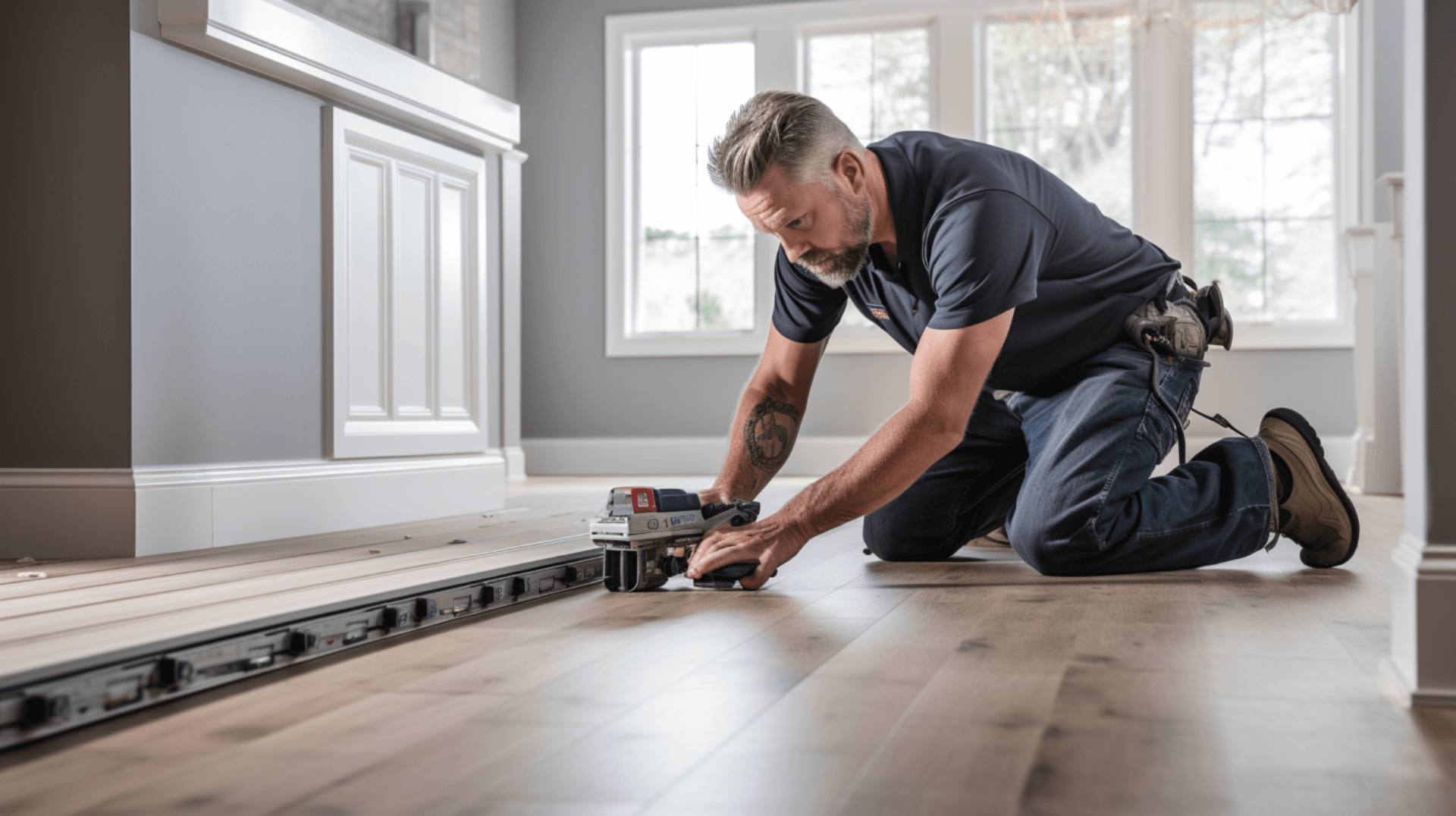
Professional services like GJP Floor Sanding play a crucial role in click floor installation, offering numerous benefits to homeowners and business owners. Here’s how GJP Floor Sanding ensures a successful click floor installation:
- Experience and Expertise: GJP Floor Sanding has years of experience and expertise in click floor installation. We are well-versed in the installation of various types of click flooring and have the knowledge and skills to handle any challenges that may arise during the process.
- Proper Preparation: GJP Floor Sanding takes the time to inspect the subfloor for cracks, holes, or unevenness. We fill and sand any imperfections to ensure a smooth surface. We also clean the subfloor to remove dirt, dust, and debris, ensuring a clean and suitable base for the click floor.
- Moisture Management: GJP Floor Sanding uses a moisture meter to check the moisture content of the subfloor. If the moisture content is too high, we install a moisture barrier to prevent warping or swelling of the click floor.
- Correct Adhesive Application: GJP Floor Sanding chooses the right adhesive for the specific type of click floor being installed. We apply the adhesive according to the manufacturer’s instructions, ensuring a secure and long-lasting bond between the planks.
- Attention to Detail: GJP Floor Sanding ensures that the planks are laid out evenly and fit together properly. We stagger the planks to distribute weight and stress evenly across the floor, enhancing its durability and longevity.
By hiring professionals like GJP Floor Sanding, homeowners and business owners can have peace of mind knowing that our click floor installation will be handled with expertise and precision, resulting in a beautiful and long-lasting floor.
Understanding the Cost of Click Floor Installation
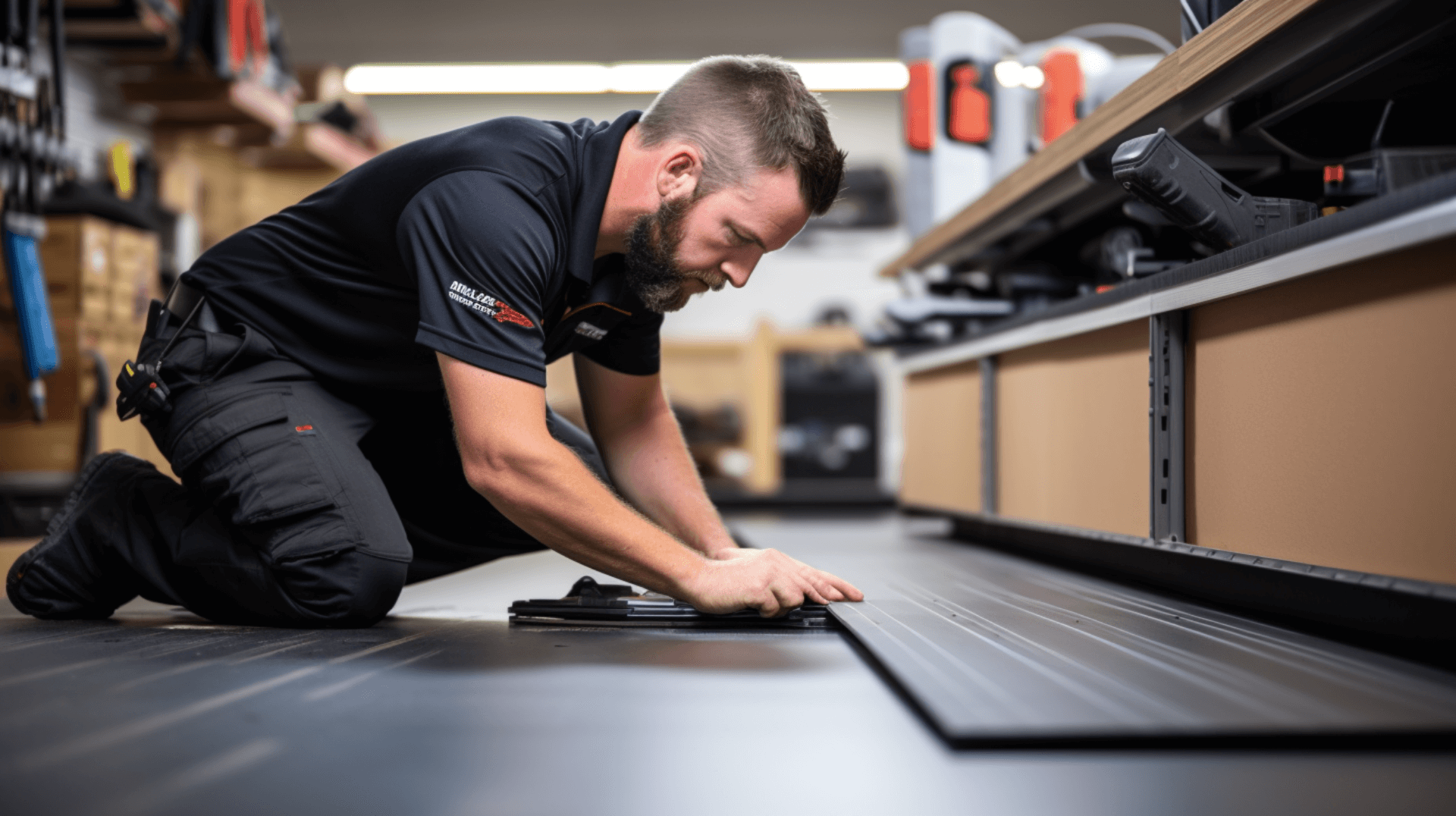
The cost of click floor installation can vary depending on several factors, including the type of flooring, the size of the room, the complexity of the installation, and the need for additional insulation to meet building regulations. GJP Floor Sanding offers competitive prices for click floor installation, taking into account these factors.
For example, the cost of installing a click floor in a small room may be lower than in a large room due to the amount of flooring material required. Additionally, if the installation requires extra insulation to meet building regulations, this may increase the overall cost.
GJP Floor Sanding prices its services based on the specific requirements of each project. We provide a free, no-obligation quote that considers the type of flooring, the size of the room, the complexity of the installation, and any additional insulation needs. We also use materials that are appropriately certified for use as insulation under timber floors to meet building regulations.
To get a quote for click floor installation from GJP Floor Sanding, customers can contact the company directly. GJP Floor Sanding will assess the project’s requirements and provide a detailed quotation that outlines the cost of the installation, including the cost of the flooring, adhesive, labor, and any additional insulation if needed. By contacting GJP Floor Sanding, homeowners and business owners can receive a tailored quote that reflects our specific needs and ensures a competitive price for click floor installation.
Why Choose GJP Floor Sanding for Click Floor Installation?
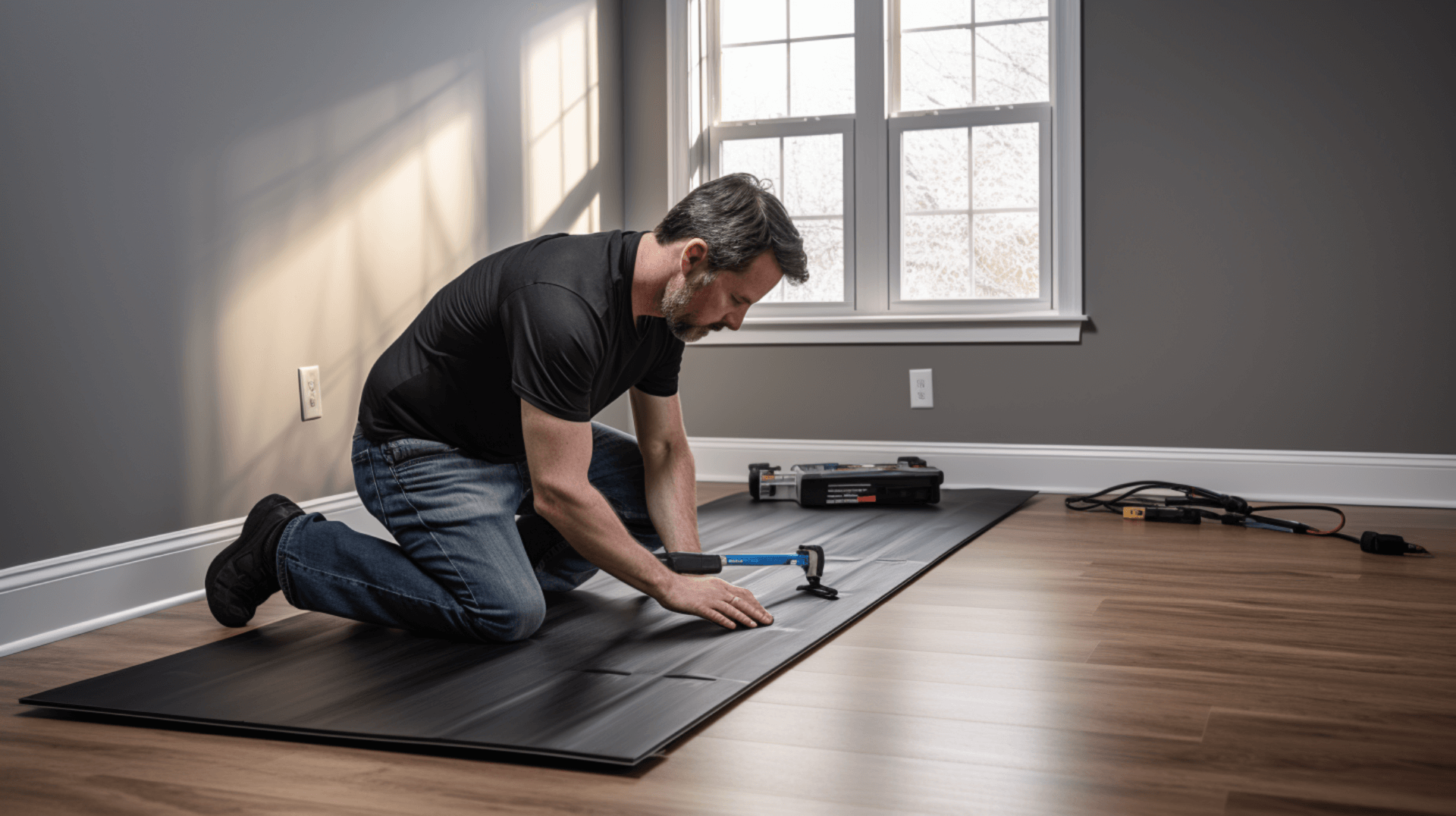
GJP Floor Sanding is a leading provider of click floor installation services, known for our professionalism, attention to detail, and competitive prices. With years of experience and expertise in the industry, we have the knowledge and skills to handle any challenges that may arise during the installation process.
Previous clients of GJP Floor Sanding have praised the company for our exceptional workmanship and the care taken to ensure a successful installation. We appreciate the thoroughness of GJP Floor Sanding’s approach, including the inspection of the subfloor for cracks, holes, or unevenness, and the filling and sanding of any imperfections to ensure a smooth surface. Clients also value the use of a moisture meter to check the moisture content of the subfloor and the installation of a moisture barrier if necessary.
GJP Floor Sanding’s attention to detail extends to the selection and application of the right adhesive for the specific type of click floor being installed. We follow the manufacturer’s instructions to ensure a secure and long-lasting bond between the planks. Additionally, GJP Floor Sanding ensures that the planks are laid out evenly and fit together properly, staggering us to distribute weight and stress evenly across the floor. We also follow the manufacturer’s guidelines for racking the planks, randomizing patterns when possible to avoid any discernible pattern in adjacent runs.
Customers appreciate the tailored quotes provided by GJP Floor Sanding, which reflect our specific needs and ensure a competitive price for click floor installation. Overall, GJP Floor Sanding stands out for our expertise, attention to detail, and commitment to customer satisfaction, making us an excellent choice for click floor installation.
Contacting GJP Floor Sanding for Click Floor Installation
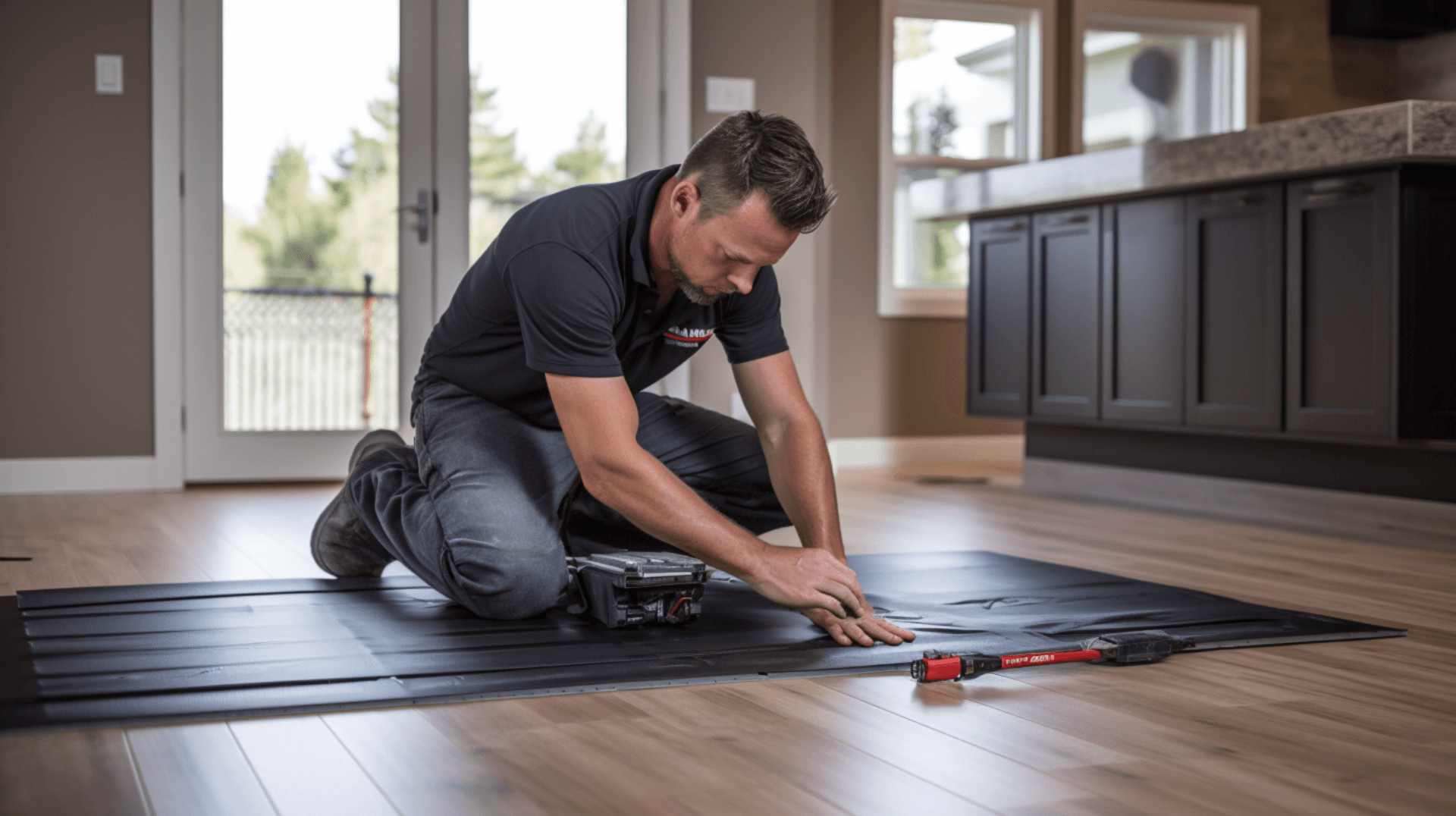
Contacting GJP Floor Sanding for click floor installation is easy and straightforward. Customers can contact the company directly by phone or email to discuss our project and receive a free, no-obligation quote. When contacting GJP Floor Sanding, customers should provide information about the type of flooring, the size of the room, the complexity of the installation, and any additional insulation needs.
During the initial consultation, GJP Floor Sanding will assess the project’s requirements and provide a detailed quotation that outlines the cost of the installation, including the cost of the flooring, adhesive, labor, and any additional insulation if needed. We will also discuss the timeline for the project and any other details that need to be taken into consideration, such as the need for fire resistance and fire stopping between homes and at penetrations, the need to separate or shield the floor from any heat-emitting appliances, fireplaces, chimneys, or flue pipes, and the need to ensure continuity of fire resistance at junctions with fire-resisting elements.
GJP Floor Sanding takes the time to understand the customer’s needs and expectations, ensuring that the project is completed to the highest standards. We use materials that are appropriately certified for use as insulation under timber floors to meet building regulations.
Overall, customers can expect a professional and efficient service from GJP Floor Sanding, with a focus on delivering a successful click floor installation that meets our specific requirements.
To schedule a click floor installation with GJP Floor Sanding, homeowners and business owners can easily contact the company directly by phone or email. During the initial consultation, customers should provide information about the type of flooring, the size of the room, the complexity of the installation, and any additional insulation needs. GJP Floor Sanding will assess the project’s requirements and provide a detailed quotation that outlines the cost of the installation, including the cost of the flooring, adhesive, labor, and any additional insulation if needed.
Once the customer has accepted the quote and scheduled the installation, GJP Floor Sanding will begin the process of preparing the subfloor for the click floor. This includes inspecting the subfloor for cracks, holes, or unevenness, filling and sanding any imperfections to ensure a smooth surface, and using a moisture meter to check the moisture content of the subfloor. If necessary, we will install a moisture barrier to prevent warping or swelling of the click floor.
GJP Floor Sanding will then select and apply the right adhesive for the specific type of click floor being installed, following the manufacturer’s instructions to ensure a secure and long-lasting bond between the planks. We will also ensure that the planks are laid out evenly and fit together properly, staggering us to distribute weight and stress evenly across the floor.
By choosing GJP Floor Sanding for click floor installation, homeowners and business owners can expect a professional and efficient service. GJP Floor Sanding has the experience, expertise, and attention to detail to handle any challenges that may arise during the installation process. We provide tailored quotes, use high-quality materials, and ensure customer satisfaction. Schedule your click floor installation with GJP Floor Sanding today to enjoy a beautiful and long-lasting floor.
